Dragon Age: Inquisition review
BioWare’s fantasy roleplaying series hits its stride in a truly epic third instalment
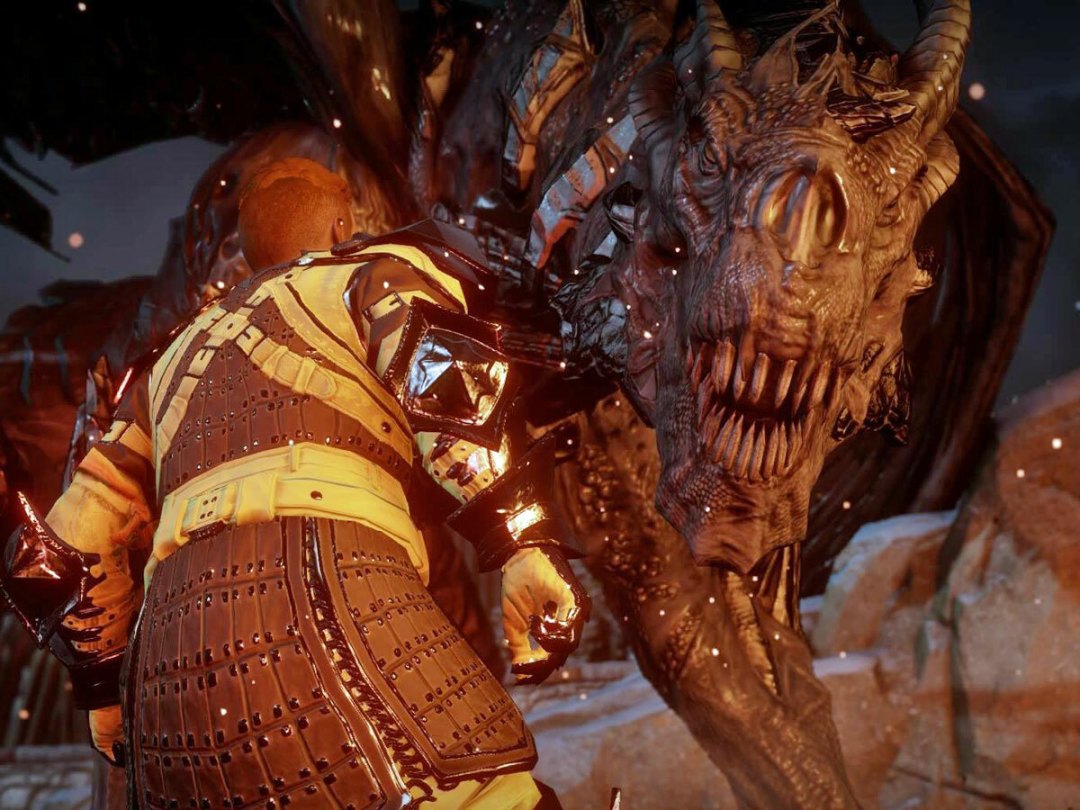
BioWare is the king of roleplaying games. From Baldur’s Gate and Star Wars: Knights of the Old Republic to Jade Empire and the Mass Effect trilogy, the Canadian developer has honed its craft, delivering games that blend compelling interactive storytelling with tactical combat, exploration and character development.
And now the company has delivered the third instalment in its Dragon Age series, a game that blends elements of the first two Dragon Age titles in an attempt to hit a “sweet spot” somewhere between number-crunching hardcore RPG and story-driven action game.
It’s a balance that works pretty darn well, even though absolute role-playing game perfection is still just out of reach.
Let me tell you a story
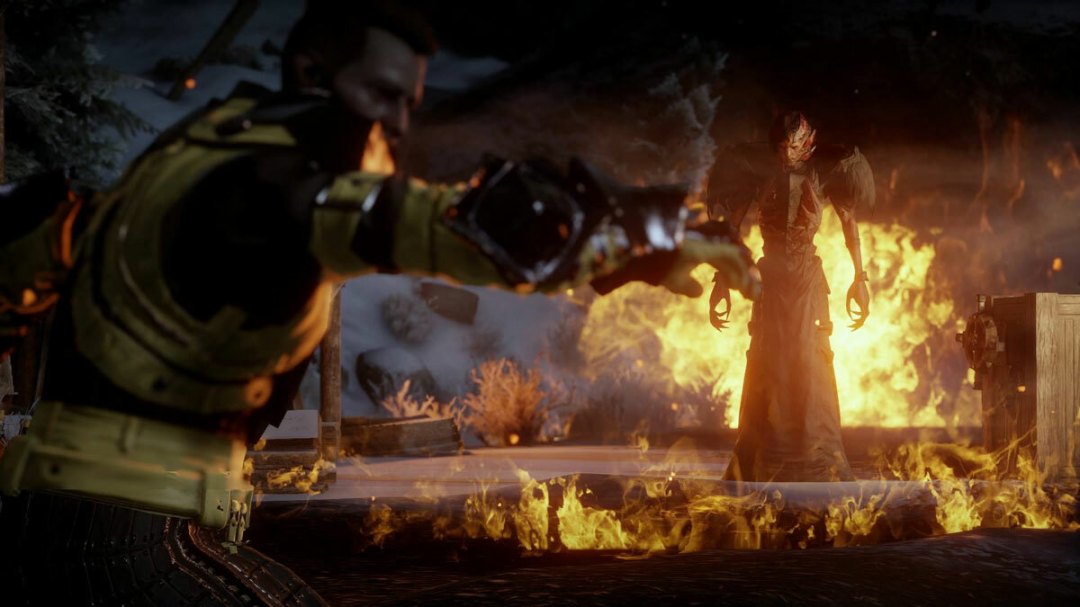
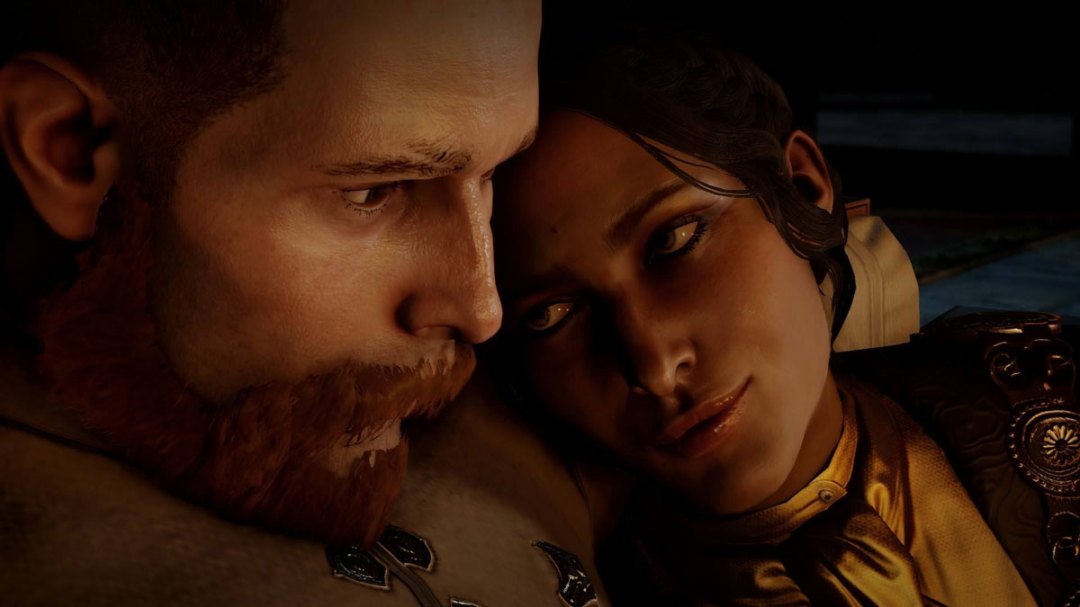


Dragon Age: Inquisition is a giant game offering up around 80 hours of playing time, but at its heart is a single story: that of a hitherto unremarkable human/elf/dwarf/qunari (you) that becomes instrumental in shaping the world of Thedas. When a summit between warring factions ends in lots of death and destruction and the opening of rifts between the real world and the demon-infested Fade, your character finds out he/she has a newfound special gift that has the potential to avert true disaster.
The game follows you as you come to terms with your growing power and responsibility and gather enough strength – through gaining allies and conquering new areas of the huge game world – to tackle the deadly threat. Along the way you’ll take over and rebuild an enormous castle, travel to other dimensions, broker peace in a civil war, gain (and possibly lose) fully fleshed-out friends and, should you play your cards right, hop into bed with a hot elf or two. Your choices in quests and conversations matter – maybe not as much as they did in Mass Effect, but they do mean if you play through the game more than once (oh, to have the time) your story will be somewhat different each time.
And that’s just the main quest (we won’t spoil things by going into specifics). There are dozens of side quests that can be taken on – or ignored entirely. Many of these are essentially fetch, collection or “kill this guy” quests, but the nature of the game means you can fulfil many of them while undertaking more important tasks – and all quests reward you with something, be it an increase in stats, a special weapon or piece of armour, or one of the game’s special resources such as Power or Influence (used to open up new quests and locations or develop your abilities).
If you haven’t played the previous Dragon Age titles, it’s no big deal – your protagonist here is a new character in a brand new story that just happens to be set in the same world. That said, there are callbacks and nods to the previous games, and the reappearance of some characters – something veterans of the series will likely appreciate.
What a wonderful world
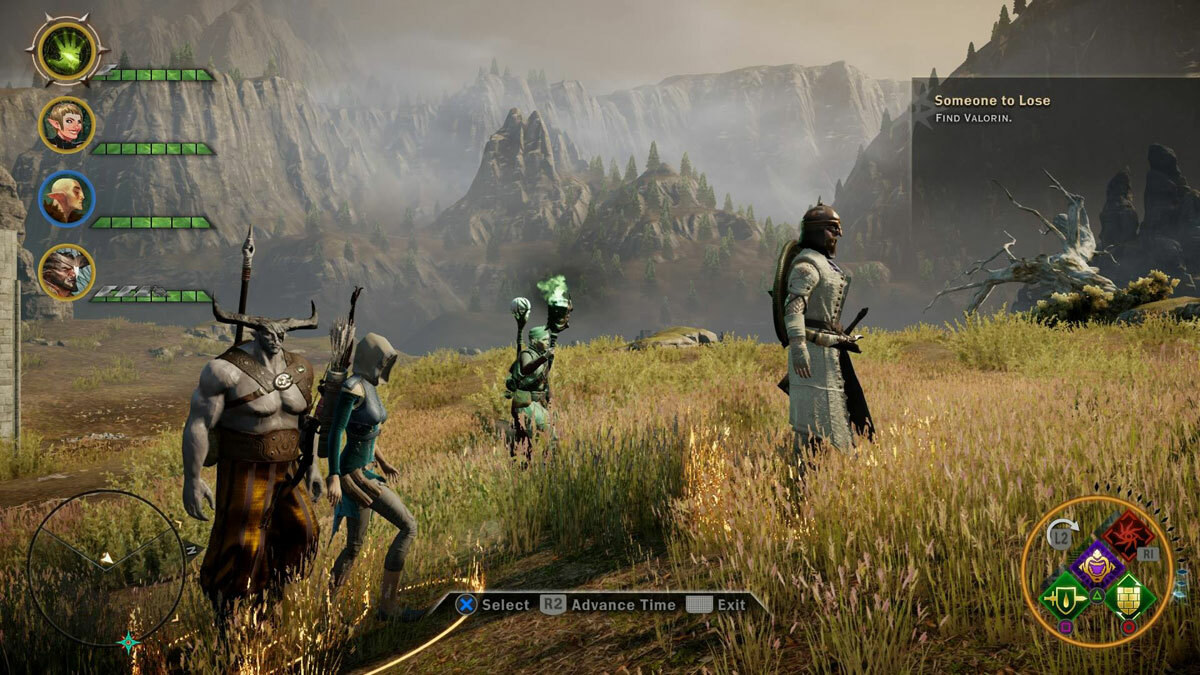
This isn’t an open world game as such. Unlike, say, Skyrim, you can’t wander from one side of Dragon Age: Inquisition‘s map to the other without a loading screen. But it is larger than previous BioWare games, thanks to many of its locations being absolutely huge.
The first wilderness area you visit, the Hinterlands, is itself bigger than many open world games – and there are several other areas of a similar size, as well as smaller, non-combat locations such as the Orlesian capital city of Val Royeux and Skyhold, the mountaintop fortress that becomes your base of operations. And by and large you can travel back and forth between these areas at will, making your movements during the game decidedly non-linear.
And it’s a beautiful world to explore. The different locations – a creepy marshland here, a sweeping desert there – showcase BioWare’s brilliant knack for creating places where it’s tempting merely to walk around and look at the scenery. But then a monster will appear and you have to hit it with your sword, which brings us nicely to…
Action or tactical?
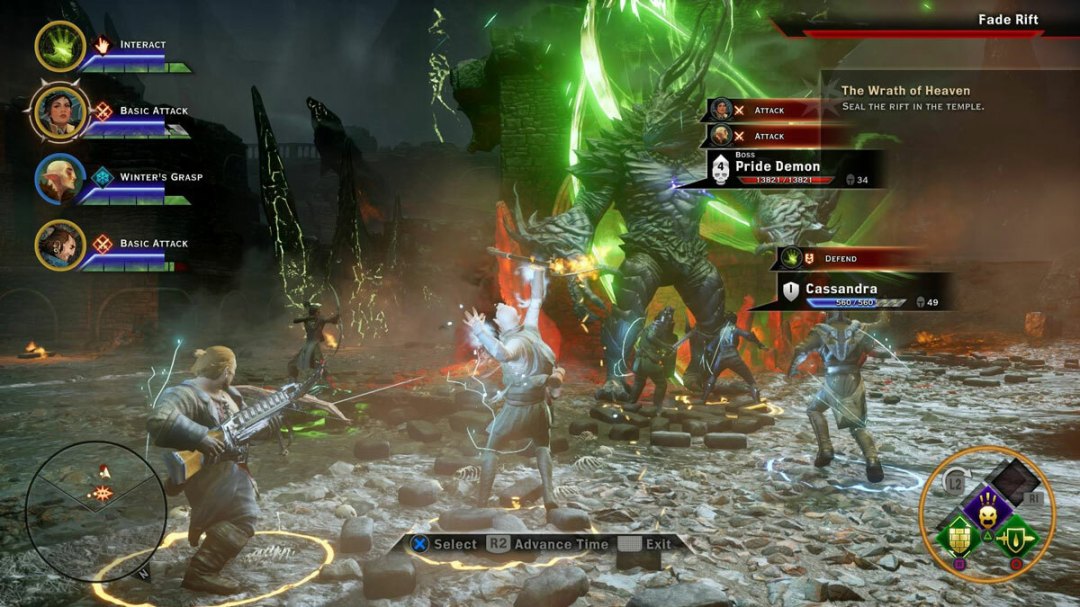
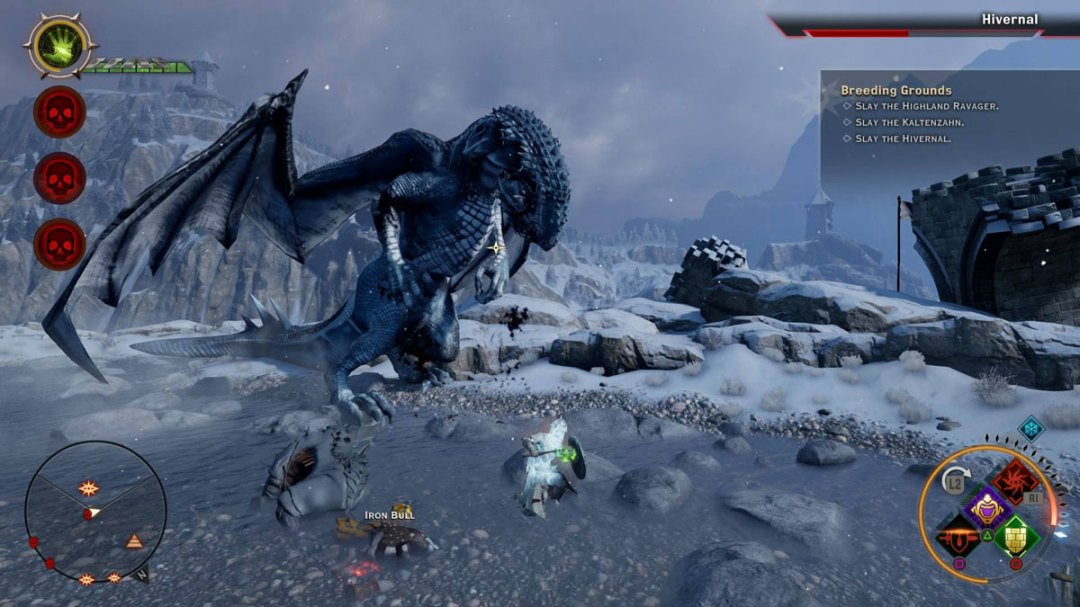
The Dragon Age series was always billed as the spiritual successor to BioWare and Interplay’s Infinity Engine games, which featured combat that sat somewhere between turn-based and real-time: you could pause the game, take your time checking out enemies’ strengths and weaknesses, issue orders to each of your party members and then un-pause to see them play out. PC gamers got a similar mode with Dragon Age: Origins (it wasn’t included in the console editions), but in Dragon Age II it was real-time all the way. Dragon Age: Inquisition has brought it back, across both PC and console editions.
You can have up to four characters in your party, and at any time you can enter the Tactical Camera mode and issue orders to each, hold another button to advance time a bit, and release it to issue more orders when the first wave have been completed. The camera, which usually affords a standard third-person view, can be pulled back to view the battlefield in its entirety.
Sounds great, doesn’t it? Sadly it doesn’t work all that well: you can’t stack orders, and on PS4 at least the controls feel less than intuitive. It’s all a bit wooly, which had me reverting to real-time combat. Here you control one member of your party while the others are AI controlled. Their behaviour (which powers they use most often etc.) can be tweaked in the menus, and in general I found that this worked well enough for most battles.
It helps that the combat (at least on the normal difficulty setting, which I used) is incredibly easy. Unless you stray into an area full of enemies that are several levels higher than you, you’ll rarely find a fight particularly challenging. Stick it on hard if you want to have to think a bit more about your battles, but even then don’t expect every fight to push you to your tactical limits. My own character has reached a point where he can easily beat high dragons – ostensibly the game’s toughest battles – on his own, even after the rest of his party are unconscious.
Dragon Age: Inquisition verdict
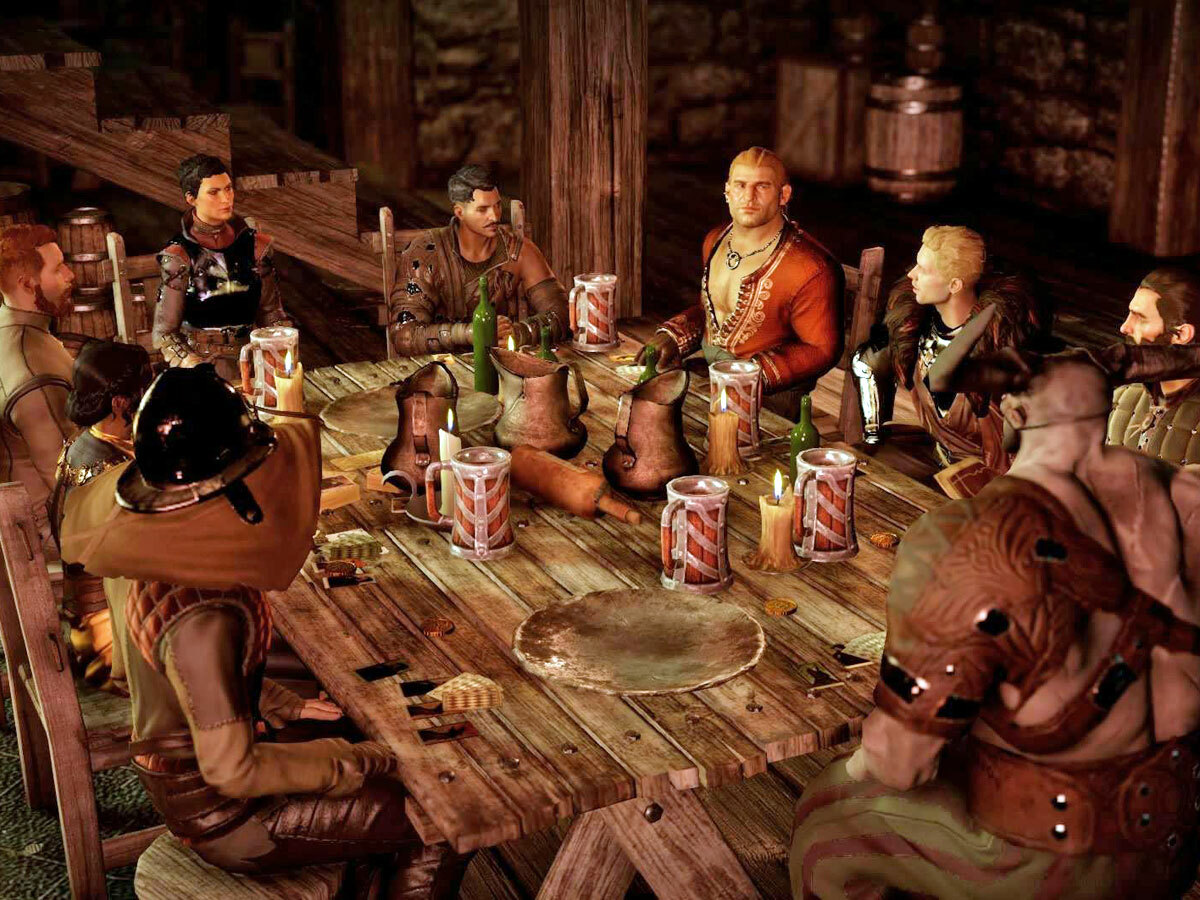
While combat proves to be something of a disappointment, it’s just one aspect of a game that will keep most players happily busy for hours on end.
I haven’t even touched on many of its other facets: the crafting system that lets you create special armour and weapons; the way in which you can recruit agents to perform special missions (not seen, usually, but described in text); the insane levels of well-written background lore available to you through the game’s Codex; the above-average voice acting and the hours and hours of spoken dialogue from a wonderful cast of characters; the subtle way in which you gradually feel your character becoming more and more powerful as his or her organisation – the titular Inquisition – expands its power base.
There’s even a multiplayer mode in which you team up with up to three other players for special battles against computer-controlled foes.
Dragon Age: Inquisition may not be the perfect RPG – it’s merely a very, very good one – but for RPG fans so far starved through the PS4 and Xbox One generation it will be precisely the game to keep them company through these cold, dark winter months. And its vast scale and replayability mean its appeal may endure well beyond that.


